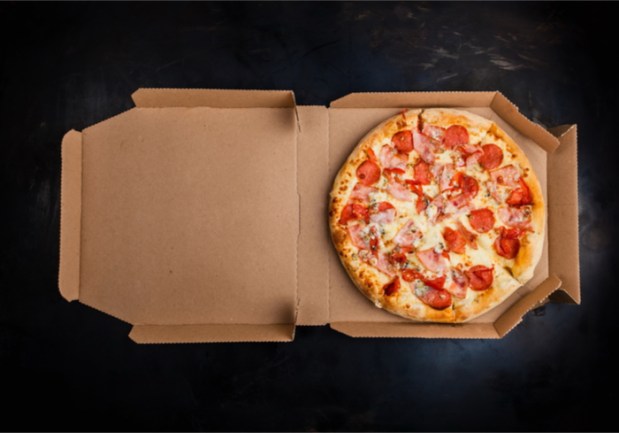How Mom-And-Pop Pizzerias Can Tap Into Digital Orders

Behind many mom-and-pop pizzerias is an owner swamped with work. Their time in the restaurant often stretches long beyond the traditional eight-hour work day.
That doesn’t leave a lot of time for figuring out digital ordering. Through platforms such as Slice, small pizzerias can tap into technology that allows their customers to order pizza online for pickup or delivery — just like the larger national chains.
Digital orders for local pizzerias is a largely untapped market. “Only a fraction of their volume today as a segment is digital,” Slice Founder and CEO Ilir Sela told PYMNTS in an interview. By comparison, Sela said 60 percent of the big pizza chains’ business is digital, leaving room for small pizzerias to grow their digital order base.
With platforms such as Slice, pizzeria owners can compete with the larger players through a mobile-optimized website and tools that enable customers to place orders through social media channels.
A Pizza Button
To order pizzas, consumers may have to go through a multi-step process on the pizzeria’s website. Through Slice, consumers can order through a pizzeria’s page on the Slice platform — or through Google or Facebook.
The payments system is flexible, allowing customers to pay by cash or credit card. Mobile wallets such as Apple Pay and Android Pay are also accepted.
The platform allows consumers to place orders for pickup, recognizing that customers are interested in options besides delivery: About 35 percent of its order volume is for pickup orders.
In comparison to other food delivery platforms, Slice is not a discovery play. Consumers usually know which pizzeria they want to order a pie from; the idea behind the company is to make the ordering process easier for the consumer.
“I want that experience to be incredibly simple and easy,” Sela said. “It’s like a pizza button for your phone.”
To generate revenue, Slice charges pizzerias a flat fee per order. The CEO said Slice orders tend to have a higher dollar value than orders customers call into the pizzerias.
The Delivery Business
Overall, digital delivery is a booming business. By 2022, the projected value of the online delivery market is projected to reach $55 billion. The value of the online pizza delivery industry alone is already $7 billion.
In 2017, 70 percent of internet users told research analysts they ordered food delivery in the past year, while another 20 percent said they planned to try it soon. In addition, 69 percent of online orders came from a mobile device.
However, online orders sometimes come with costly commissions. The high-end percentage of commission costs charged to participating restaurants by ordering platforms such Grubhub, Uber Eats and DoorDash can run up to 30 percent.
Consumers, too, are changing the way they interact with food — but are restaurants keeping up? Online ordering and online payments via websites and smart devices now make up 6.6 percent of total restaurant orders, finally surpassing orders called in by phone (now 5 percent of the total).
For delivery platforms, Uber Eats was on track to post more than $3 billion in gross sales by the end of 2017, The Financial Times reported. Introduced in 2014 alongside a handful of other experimental services, Uber Eats operates worldwide in 29 countries. The $3 billion gross sales figure is indicative of how rapidly the ridesharing company’s food delivery division has grown.
The Whole Pie
Large urban centers such as New York, Chicago or San Francisco have many options for pizza. But many markets outside those areas are underserved. That’s where Slice comes in.
“It’s really for the rest of the country,” Sela said, adding that Slice just surpassed 9,000 locations and is growing quickly.
The CEO wants to help owners open up hyperlocal brands, as some people are inspired to open up a franchised location of national pizza brands. With Slice, owners can have a customer base without paying the franchise fees. And pizzerias are taking note: Some are even relying on the app for all their business.
A pizzeria in Long Island City, for example, is a digital-only restaurant on the platform. “The only way that you can order is through Slice,” Sela said.
